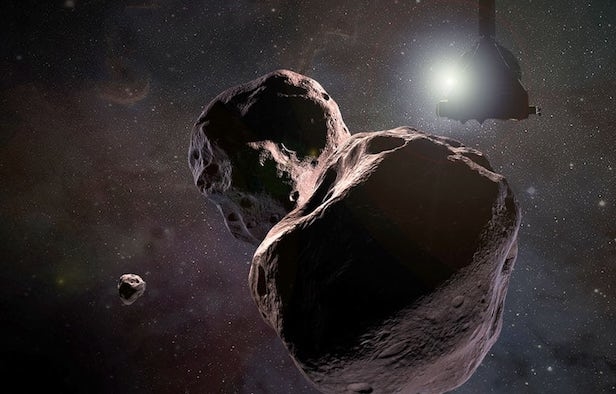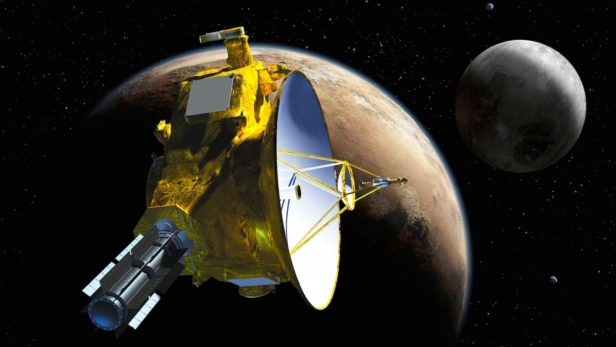New Horizons Update: Spacecraft takes inside course for Ultima Thule rendezvous
With no apparent hazards in its way, NASA’s mission has been given a “go” to stay on its optimal path to the Kuiper Belt Object
With no apparent hazards in its way, NASA’s New Horizons spacecraft has been given a “go” to stay on its optimal path to Ultima Thule as it speeds closer to a 1 January flyby of the Kuiper Belt object a billion miles beyond Pluto – the farthest planetary flyby in history.
After almost three weeks of sensitive searches for rings, small moons and other potential hazards around the object, New Horizons principal investigator Alan Stern gave the “all clear” for the spacecraft to remain on a path that takes it about 3,500 kilometres (2,200 miles) from Ultima, instead of a hazard-avoiding detour that would have pushed it three times farther out. With New Horizons blazing though space at some 50,700 kilometres (31,500 miles) per hour, a particle as small as a grain of rice could be lethal to the piano-sized probe.
The dozen-member New Horizons hazard watch team had been using the spacecraft’s most powerful telescopic camera, the Long Range Reconnaissance Imager (LORRI), to look for potential hazards. The decision on whether to keep New Horizons on its original course or divert to a more distant flyby, which would have produced less-detailed data, had to be made this week since the last opportunity to manoeuvre the spacecraft onto another trajectory was today.
New Horizons formed its hazard watch team in 2011 to prepare for its Pluto flyby, addressing concerns that Pluto’s newly discovered small moons could spread dangerous debris across New Horizons’ path. An intense search turned up no potential mission-ending risks; the team opted for the original flight plan and New Horizons safely carried out its historic exploration of the Pluto system in July 2015.
This year, the hazard watch team has been conducting similar analyses on the approach to Ultima Thule, which is officially designated 2014 MU69. Any ring structure reflecting even just five 10-millionths of the sunlight falling on it would have been visible in the images, as would any moons more than about three kilometres (two miles) across, but the team saw none. Scientists will continue to look for rings or moons that are very close to Ultima, but those would not pose a risk.
“Our team feels like we have been riding along with the spacecraft, as if we were mariners perched on the crow’s nest of a ship, looking out for dangers ahead,” said hazards team lead Mark Showalter, of the SETI Institute. “The team was in complete consensus that the spacecraft should remain on the closer trajectory, and mission leadership adopted our recommendation.”
“The spacecraft is now targeted for the optimal flyby, over three times closer than we flew to Pluto,” added Stern. “Ultima, here we come!”
New Horizons will make its historic close approach to Ultima Thule at 05:33 am (12:33 am) EST on 1 January – the first ever flyby of a Kuiper Belt object.
Keep up to date with the latest news in All About Space – available every month for just £4.99. Alternatively you can make the most of our Christmas offer and subscribe here for a fraction of the price!







